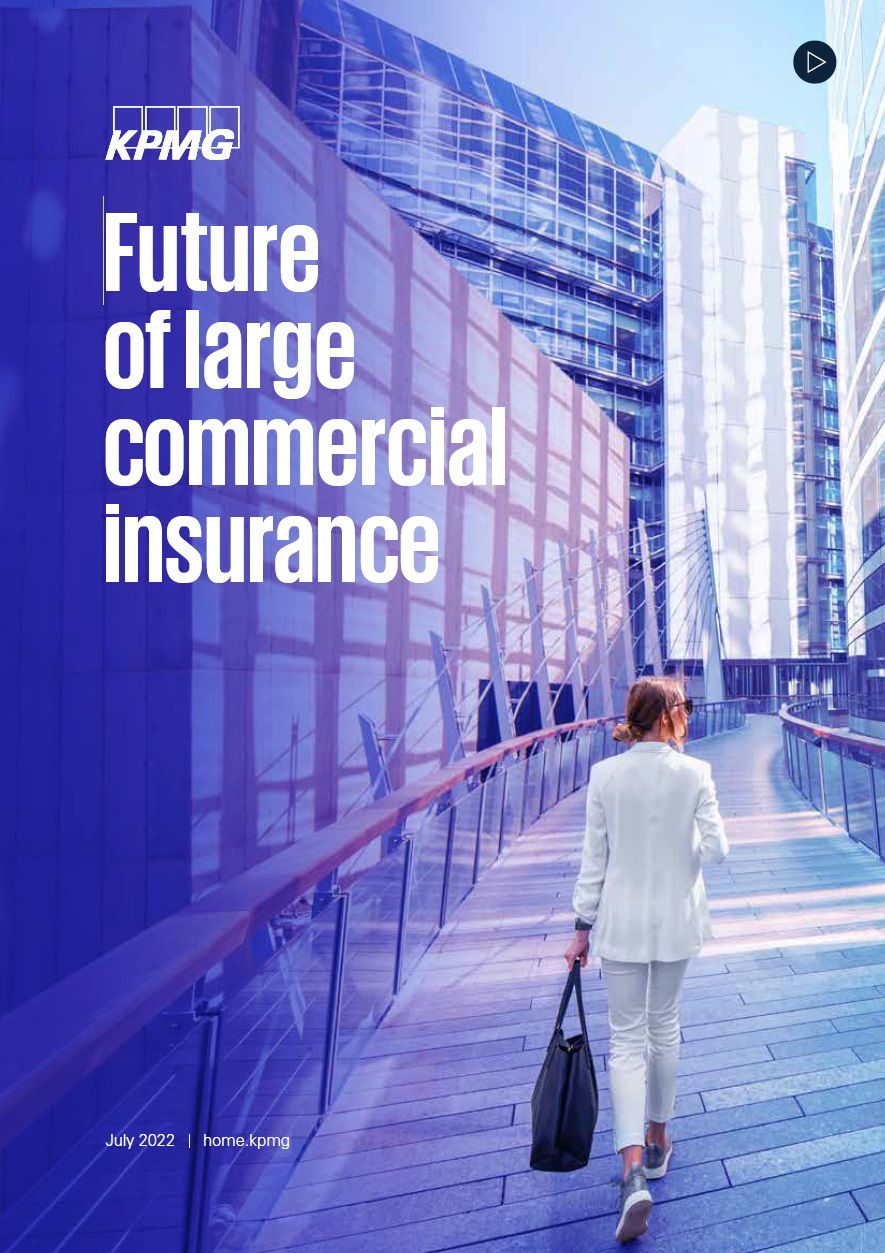Signals of change | Future business models | KPMG Connected Enterprise | Our approach | Contact us
The business landscape is changing rapidly. Despite strong market performance, traditional commercial insurance business models are coming under pressure from swirling changes that now have the sector on the cusp of a radical transformation.
To survive and thrive in this new environment, commercial insurers shouldn’t stand still. They need to evolve and build new differentiated capabilities that connect across the organization. Technology will be critical, but digital transformation goes well beyond technology.
Insurers need a clear, client-led business design of their end-to-end process that should be driven by deep client, broker and market insights. It should be underpinned by a digitally-enabled technology architecture and empowered workforce. In our view, it is only by taking this “connected” approach that insurers can achieve true value from their digital transformations.
In our latest report, KPMG spoke with over 400 decision-makers from commercial insurance organizations across the globe to better understand the evolving trends and their impacts on the future of the sector, alongside what we believe will be the three winning business models of the future.

Future of large commercial insurance
Discover the latest insights and trends that are shaping the large commercial insurance industry
Download PDF (2.93 MB) ⤓
Signals of change
Insurance business models continue to function and the market remains buoyant. However, traditional commercial insurers are coming under pressure from swirling changes from both internal and external factors that now have the sector on the cusp of a radical transformation. In the latest report, we discuss the five key signals of change and the impact these may have.
01
Agile global player – “Optimize the existing”
Established players in the market, often large international insurers covering multiple countries, business lines and segments, will focus on harnessing the wide range of new technologies, adapting to the changing economic and social landscape, and effectively reducing the “tower of legacy” on which current products rely.
02
Innovative specialist – “Adapt and exploit at pace”
These are nimble and dynamic organizations with the ambition and capability to rapidly embrace new and emerging risks. These businesses develop new products and supporting operating models that harness the power of technology and data to help scale rapidly and respond aggressively to new opportunities in the market.
03
Open-source risk manager – “Stock market of risk”
These organizations have recognized that the global insurance market is not simple, efficient or integrated. Instead, it’s complicated, highly regulated and competitive. These players bring together the disparate components of risk, capital and operational execution in a way that carves out a powerful position in the market.
KPMG Connected Enterprise
KPMG Connected Enterprise is a customer-centric, tailored-by-sector approach to digital transformation. It transforms the way that you transform, helping you to focus your enterprise, operations and technology development on meeting customer, employee and stakeholder expectations, creating business value, and driving sustainable growth.
Eight capabilities, twice as likely to succeed
The eight capabilities of the KPMG Connected Enterprise deliver tools, methods and frameworks to achieve a new, better business-as-usual with agility and accelerated innovation.
These capabilities help retail businesses define a customer-centric approach to digital transformation that connects the front, middle and back offices, which will be of critical importance to navigate the future commercial insurance landscape.
Base: 1,299 professionals involved with customer-centric strategy decisions
Source: A commissioned study conducted by Forrester Consulting on behalf of KPMG, September 2018.
- 2xImpact
Our approach
Our approach is centered on enhancing all eight connected capabilities across the enterprise to the level that can provide the greatest value. These connected capabilities map to the operating model of an insurer and can allow you to prioritize, shape and execute your digital transformation.
KPMG professionals help insurers evaluate their maturity across these connected capabilities, shape their transformation agenda and plans, and deploy improvements in the capabilities across the enterprise with the aim of providing the greatest value.
With the consumer at the core, there are five critical questions that commercial insurers should ask themselves:
Are you connecting your clients/brokers with compelling value propositions, opportunities,
and interactions?Are you connecting and empowering your employees to deliver on the client promise?
Are you connecting your front, middle and back offices to execute the client growth agenda?
Are you connecting your ecosystem of business partners to jointly deliver on commitments
to clients?Are you connecting to market dynamics and digital signals?
Connect with us
- Find office locations kpmg.findOfficeLocations
- kpmg.emailUs
- Social media @ KPMG kpmg.socialMedia
Building connections that shape your future
Contact us
Further insights
Throughout this page, “we”, “KPMG”, “us” and “our” refers to the global organization or to one or more of the member firms of KPMG International Limited (“KPMG International”), each of which is a separate legal entity.






